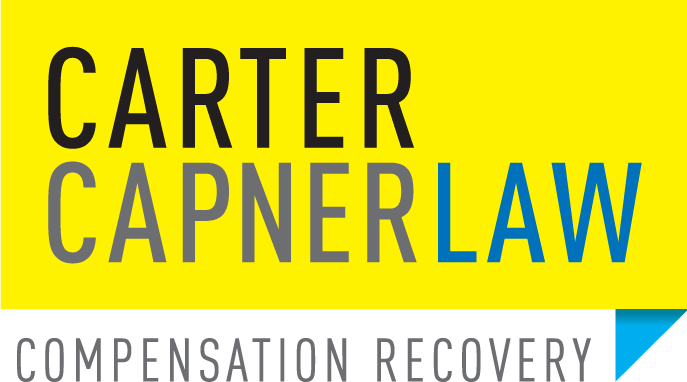Written by Carter Capner Law
Updated on March 26, 2025On 21 May 2024, Singapore Airlines Flight SQ321—traveling from London’s Heathrow Airport to Singapore—encountered severe turbulence mid-flight, forcing the aircraft to divert to Bangkok. Tragically, one passenger died, and at least 71 people were injured, underscoring how a routine international journey can transform in an instant. For Queensland residents who frequently travel overseas, the SQ321 incident highlights crucial legal and practical considerations about airline liability, passenger rights, and how to respond if you’re caught in a similar airborne emergency.
What Happened on SQ321?
The Boeing 777-300ER aircraft was about 10 hours into its flight when it encountered an intense patch of turbulence over Myanmar’s Irrawaddy Basin. Drinks, food trays, and personal belongings were hurled into the air; unsecured passengers and crew members suffered sudden impacts against seatbacks and overhead bins. One 73-year-old passenger later died from a suspected heart condition, while dozens of others sustained injuries ranging from bruises to broken arms. The flight made an emergency landing at Bangkok’s Suvarnabhumi International Airport, where injured individuals were taken to local hospitals.
Turbulence & Airline Responsibilities
Turbulence itself can be unpredictable—especially clear-air turbulence that radar may not detect. However, airlines carry certain duties to mitigate risks:
- Pre-Flight Planning: Monitoring weather systems, known turbulence zones, and relevant pilot reports to adjust flight paths where feasible.
- Cabin Preparations: Ensuring passengers heed seatbelt instructions, stowing loose items, and securing galley equipment.
- Prompt Seatbelt Warnings: Issuing seatbelt signs with enough lead time so passengers can fasten themselves before turbulence strikes.
When extreme turbulence occurs, airlines must demonstrate they followed reasonable measures to protect passengers, or they risk liability under international treaties or local laws.
The Montreal Convention & Liability
Because Flight SQ321 operates internationally, passenger injury claims typically fall under the Montreal Convention, a global treaty governing airline liability. Key details:
- Accident Definition: Airlines may be strictly liable for injuries stemming from an onboard “accident”—a sudden, unexpected event causing bodily harm.
- Strict Liability Threshold: Up to a certain financial limit, carriers must compensate injured passengers unless they prove the event was caused by external factors they couldn’t control.
- Passenger Contributory Negligence: If you ignored seatbelt instructions or contributed to your injuries, the airline’s financial responsibility may be reduced.
- Two-Year Time Limit: Passengers generally have two years from the flight’s arrival date—or intended arrival date—to begin legal proceedings.
For Queensland travellers on SQ321 who suffered harm, the Montreal Convention likely forms the basis of any compensation claim, supplemented by any relevant consumer or personal injury regulations at the point of disembarkation.
Common Turbulence Injuries & Compensation Claims
Severe turbulence can lead to an array of injuries:
- Head & Neck Trauma: Collisions with overhead compartments or seatbacks can result in concussions, whiplash, or worse.
- Fractures & Sprains: Violent shaking may throw passengers onto the floor or against seats, causing broken arms or ankles.
- Psychological Stress: Sudden, life-threatening fear can precipitate anxiety, panic disorders, or PTSD.
Damages sought under the Convention can encompass medical bills, lost income, pain and suffering, and additional verifiable expenses. However, the airline may counter that they took all reasonable steps (such as seatbelt sign usage, route adjustment) and that the event was beyond their control.
Lessons for Queensland Travellers
The SQ321 incident serves as a stark reminder of in-flight unpredictability. Queensland residents can adopt several measures to reduce risks and protect potential claims if turbulence occurs:
| Action | Why It’s Important |
|---|---|
| Wear Seatbelts | Seatbelt compliance is crucial; ignoring signs can reduce compensation if injured |
| Keep Loose Items Secure | Unsecured objects become projectiles when severe turbulence hits |
| Document Warnings & Actions | Note if and when seatbelt signs activated, any airline announcements, and crew instructions |
| Seek Medical Check-up | Hidden injuries like whiplash or internal trauma may not surface immediately; medical records are vital for claims |
| Consult Legal Advice | Montreal Convention processes can be complex; a lawyer can guide you on evidence preservation & claim filing |
Handling a Turbulence Injury Claim
If you were on a flight like SQ321 and suffered injuries, here’s an outline for pursuing compensation:
- Notify the Airline Promptly: File an official incident report and gather contact information for any witnesses.
- Keep All Relevant Documentation: Medical reports, receipts, photos of injuries, or evidence of seatbelt sign usage can prove essential.
- Invoke the Montreal Convention: This treaty is often the legal basis for claims arising from international flights. You generally have two years to initiate a lawsuit.
- Evaluate Contributory Negligence: If you failed to follow seatbelt instructions, expect potential reduction in compensation.
- Check Travel Insurance: Some policies cover medical expenses and incidentals that are separate from airline liability claims.
Frequently Asked Questions (FAQ)
Does Singapore Airlines automatically compensate injured turbulence victims?
Not automatically. Under the Montreal Convention, Singapore Airlines must compensate injured passengers unless they can show the event was beyond their reasonable control. However, negotiations or legal proof may be required if liability or contributory negligence is disputed.
What if I wasn’t wearing my seatbelt when the turbulence hit?
Failing to wear a seatbelt when instructed may reduce your compensation under “contributory negligence.” While it doesn’t eliminate a claim, the airline might argue you contributed to your injuries by ignoring safety directives.
How does travel insurance factor in?
Travel insurance can help cover immediate medical costs or trip disruptions following a turbulence incident, independent of the airline’s liability determination. Review your policy terms to clarify what’s included, particularly regarding medical repatriation or lost income.
What if a passenger died due to a preexisting condition triggered by turbulence?
Airlines may contest liability if a death primarily results from an unrelated medical issue. Still, families might argue the violent turbulence exacerbated or triggered the fatal event. Courts assess whether the airline took all necessary measures to ensure passenger safety under the Montreal Convention.
Key Takeaways (TL;DR)
- Singapore Airlines Flight SQ321 experienced severe turbulence on 21 May 2024, causing one death and at least 71 injuries.
- The Montreal Convention governs compensation for international flight injuries, subject to airline defences and contributory negligence rules.
- Seatbelt compliance significantly impacts injury outcomes and potential compensation.
- Passengers can pursue claims for medical costs, lost wages, and pain & suffering under fault-based or strict liability thresholds.
- Timely legal counsel helps navigate treaty timelines, insurer negotiations, and evidence gathering.
Although turbulence is a known risk in air travel, the Singapore Airlines Flight SQ321 incident demonstrates how swiftly a flight can turn dangerous—and how crucial it is for travellers to know their legal rights. By following safety advice (like wearing seatbelts), documenting events, and understanding that international law (the Montreal Convention) underpins many claims, Queensland residents can better safeguard themselves—and potentially seek fair compensation—when faced with unforeseen in-flight emergencies.
Sources / Citations
[1] International Civil Aviation Organization – Montreal Convention 1999
[2] Singapore Airlines – Travel Info & Conditions of Carriage


